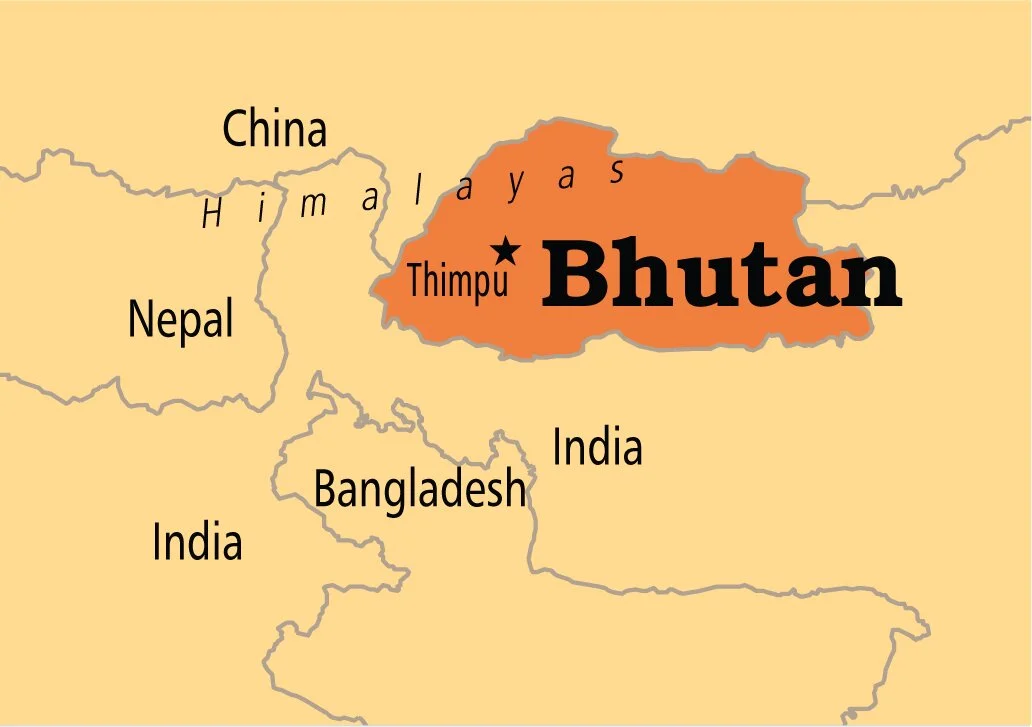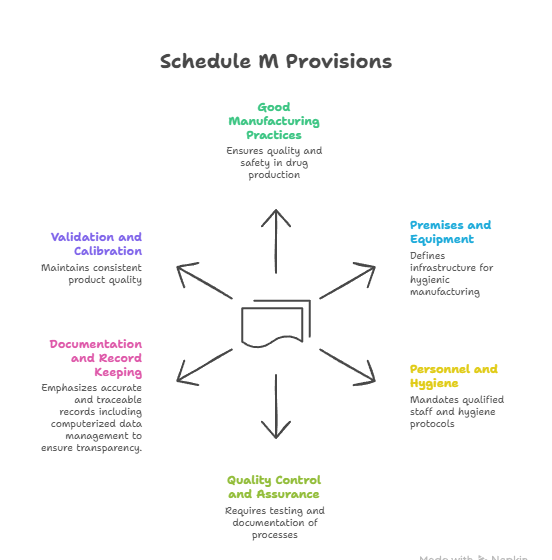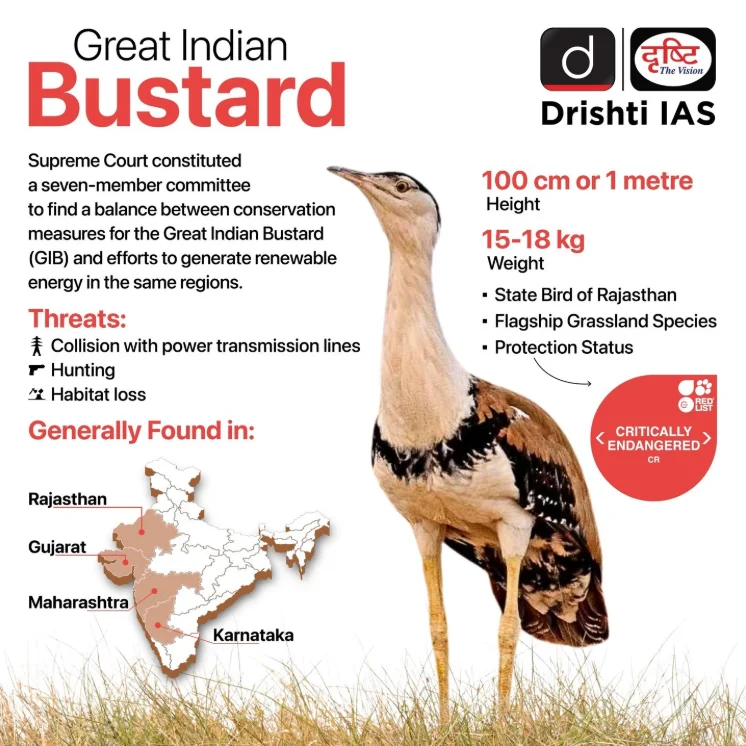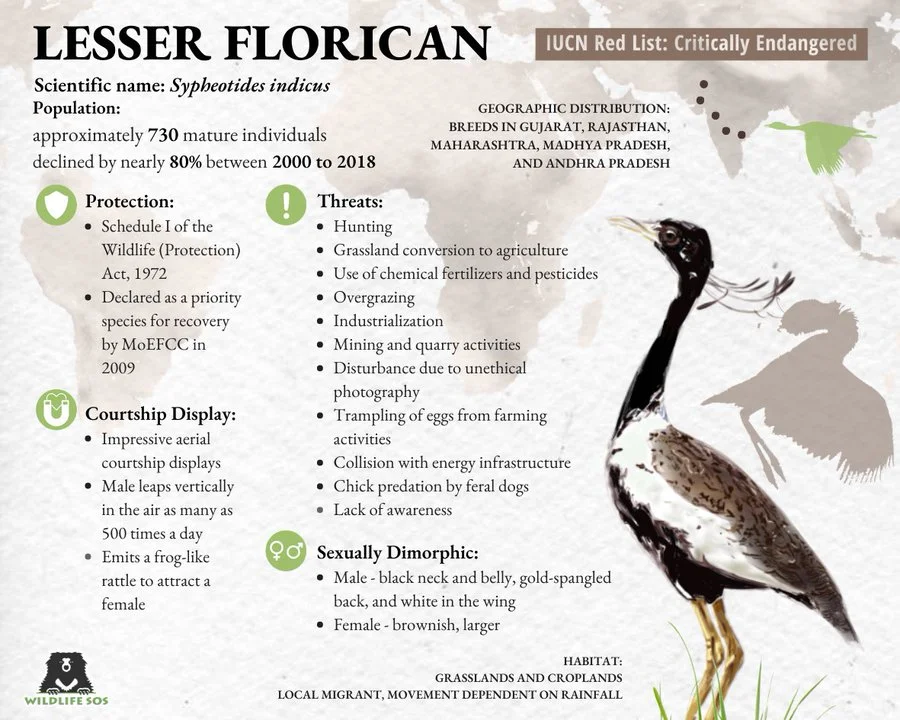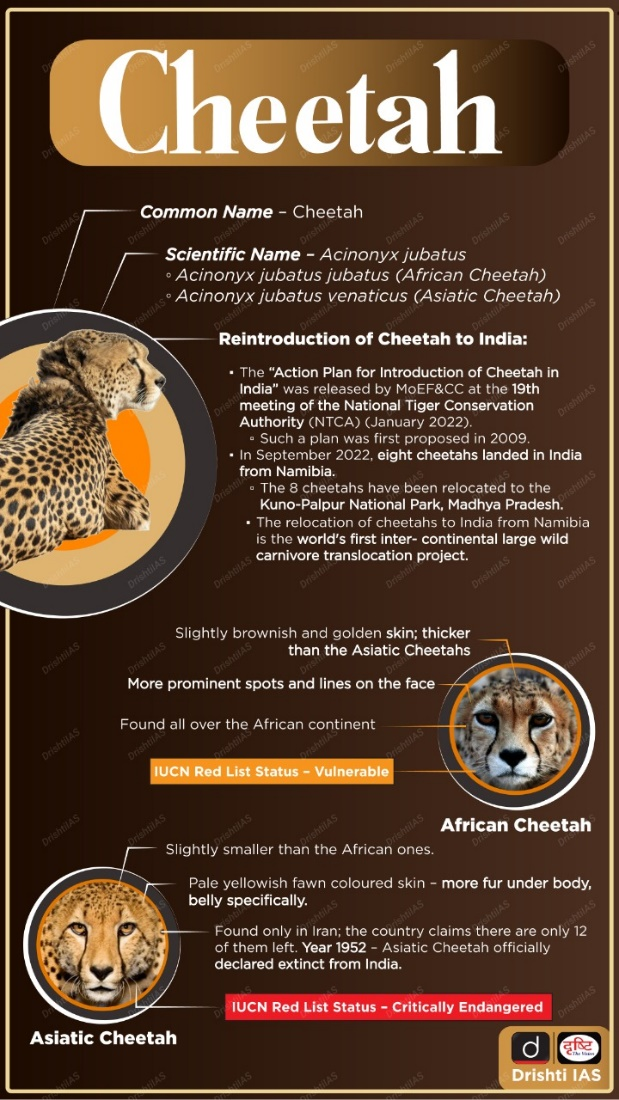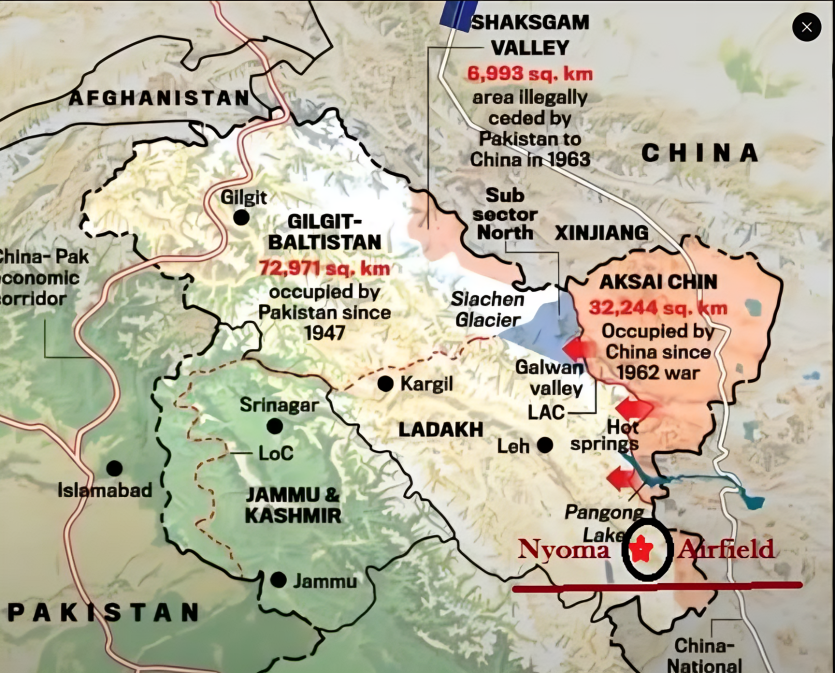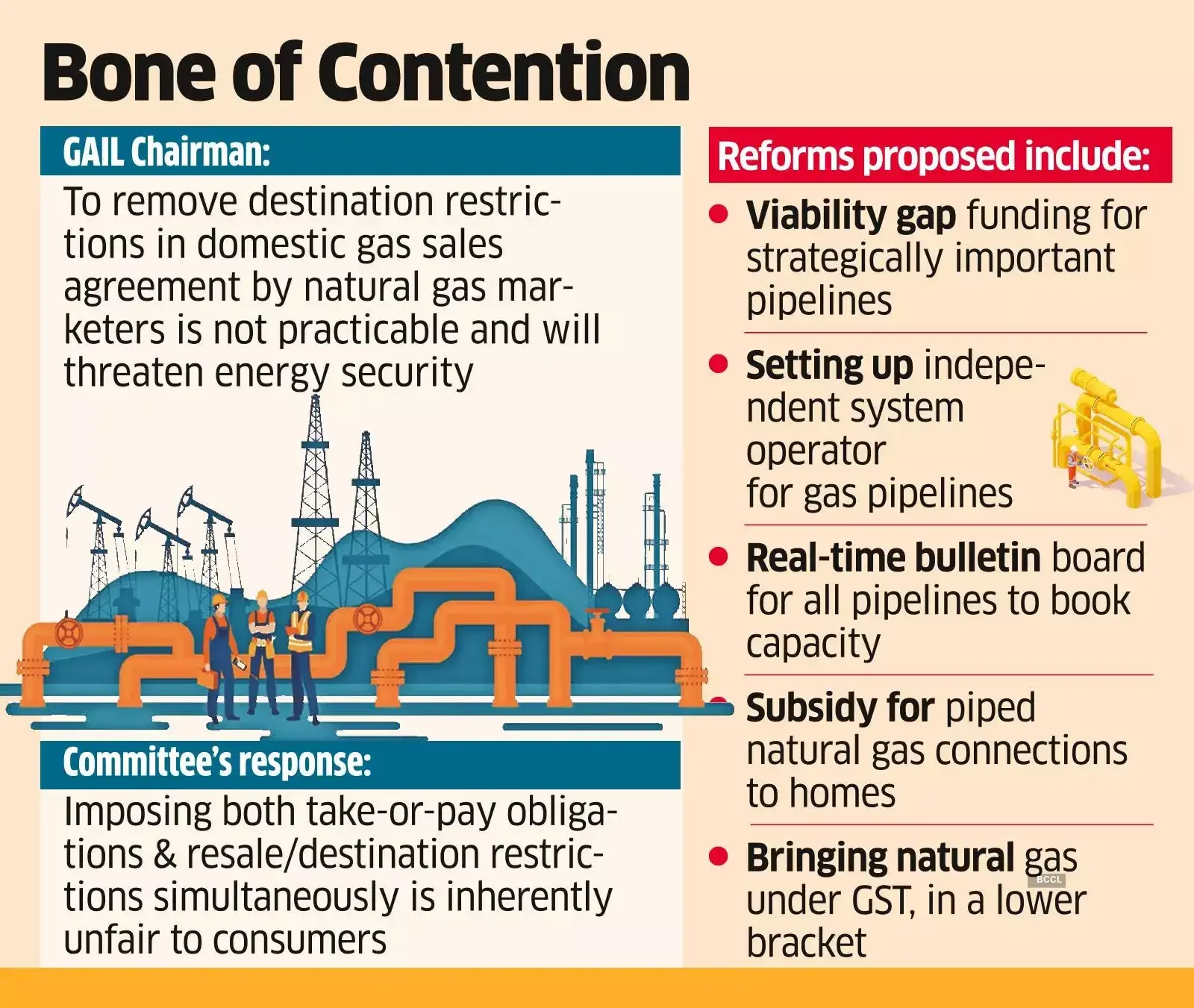International Relations
Strengthening India-Bhutan Partnership
For Prelims: Five Year Plan, Gelephu Mindfulness City Project, STEM, MSMEs.
For Mains: Key Outcomes of PM Modi’s Bhutan Visit, India-Bhutan Relations, Challenges, and Future Partnership Directions.
Why in News?
India’s Prime Minister undertook a State Visit to Bhutan to attend the 70th birthday celebrations of Bhutan’s 4th king (Druk Gyalpo), Jigme Singye Wangchuck, father of the current monarch.
What are the Key Highlights of India’s State Visit to Bhutan?
- Economic and Developmental Assistance: India reaffirmed its support for Bhutan’s 13th Five Year Plan and Economic Stimulus Programme, and announced backing for the Gelephu Mindfulness City project and an Immigration Check Post at Hatisar, Assam.
- India and Bhutan signed 3 New MoUs on renewable energy, health, and mental health.
- Hydropower Diplomacy: India and Bhutan inaugurated the 1020 MW Punatsangchhu-II Project and resumed work on the 1200 MW Punatsangchhu-I Project, strengthening their hydroelectric partnership.
- India also extended a Line of Credit of Rs 40 billion for new energy projects in Bhutan.
- Connectivity and Infrastructure: Both sides reaffirmed commitment to strengthen cross-border connectivity and infrastructure, building on initiatives like the Darranga Check Post and Jogigopha Multimodal Terminal.
- They acknowledged progress on the Cross-Border Rail Links connecting Gelephu–Kokrajhar and Samtse–Banarhat.
- Trade and Agriculture Cooperation: India institutionalised the supply of essential commodities and fertilisers to Bhutan, with the first consignment ensuring uninterrupted agricultural inputs.
What are the Key Areas of Cooperation Between India and Bhutan?
- Trade and Economic Ties: India and Bhutan maintain a free trade regime under the India-Bhutan Trade Agreement (1972, revised 2016).
- Since 2014, India's trade with Bhutan has more than tripled—from USD 484 million in 2014–15 to USD 1,777.44 million in 2024–25 and is the leading source of investments (50% of total).
- Development Partnership: India has been Bhutan’s key development partner since the 1960s, providing Rs. 4,500 crore (73% of external grants) during the 12th Five-Year Plan for agriculture, ICT, health, industry, transport, energy, urban development, and education.
- 4 hydropower projects (2,136 MW) are operational and Punatsangchhu-I & II (2,220 MW) are under construction; India imported INR 2,448 crore of electricity from Bhutan in 2022.
- Cultural Ties: India provides 1,000+ scholarships annually to Bhutanese students, offers Indian Technical and Economic Cooperation (ITEC) training, and promotes cultural, educational, and scientific exchanges through the India-Bhutan Foundation (2003).
- Bhutanese pilgrims visit sites like Bodh Gaya, Rajgir, Nalanda, and Sikkim, while India supports Bhutanese cultural projects including Lhakhang (temple) construction.
- Emerging Areas of Cooperation: Bilateral ties cover digital, financial, and space technology, with Bhutan using RuPay, BHIM, and Digital Drukyul, launching the India-Bhutan SAT (2022), opening a Ground Earth Station (2023), and getting help to address STEM teacher shortages.
What are the Key Challenges in India-Bhutan Relations?
- China Factor and Geopolitical Balancing: Bhutan’s border talks with China, especially over Doklam, impact Indian security, as shown by the 2017 standoff. Seeking strategic autonomy, Bhutan aims to balance relations and diversify partnerships, which may affect its exclusive ties with India.
- Economic Dependency: Bhutan’s economy relies heavily on India as its top trade partner, donor, and hydropower market, creating a power asymmetry and perceptions of dominance.
- Bhutan’s tourism policy, with a high Sustainable Development Fee, limits Indian visitors, affecting people-to-people ties and border economies.
- Environmental Concerns: Multiple dams on Bhutanese rivers raise concerns in downstream Indian states over water flow, siltation, and extreme weather impacts e.g., Bhutan’s Tala dam overflow floods Dooars region in West Bengal.
- Border and Security Issues: Despite a largely peaceful border, India and Bhutan face occasional security concerns like illegal trade, smuggling, and insurgent movement, making border management alongside economic exchange challenging.
How can India-Bhutan Partnership Be Strengthened?
- Economic Diversification: Promote joint ventures, MSMEs, and technology-driven industries to reduce Bhutan’s dependence on India and explore sectors like renewable energy, IT, pharmaceuticals, and eco-tourism.
- Expand collaboration from hydropower to solar and wind energy for a diversified and resilient energy portfolio.
- Strengthening Strategic Ties: India should maintain quiet but firm diplomatic support for a swift resolution of Bhutan-China border talks, safeguarding all parties’ security interests.
- Expand Technological Cooperation: Deepen India’s role in space, satellite, and digital projects like telemedicine, education networks, and internet gateways, and provide STEM and ICT capacity-building as Bhutan’s main source of technical expertise.
- Cultural and Soft Power: Launch Himalayan Cultural Corridor with Nepal to preserve Buddhist heritage via digital archives and create a Young Leaders Fellowship for Bhutanese professionals to gain experience in Indian institutions.
- Joint Water Resource Management: Shift from hydropower to integrated river basin management, emphasizing water quality, flood control, and climate adaptation as a model for transboundary cooperation.
Conclusion
India-Bhutan relations are transitioning from a traditional model of dependency to a dynamic, multifaceted partnership encompassing trade, energy, digital technology, education, and cultural cooperation. Future success depends on strategic adaptation, economic diversification, fostering people-to-people ties, and leveraging geographical proximity to create a sustainable strategic and regional advantage for both nations.
|
Drishti Mains Question: "Beyond hydropower, the future of India-Bhutan ties lies in cooperation in digital, space, and green technologies." Elaborate on this statement and discuss the way forward. |
Frequently Asked Questions (FAQs)
1. When did India and Bhutan establish formal diplomatic relations?
Formal diplomatic relations between India and Bhutan were established in 1968, based on the 1949 Treaty of Friendship, which was renewed in 2007.
2. Which hydropower projects were inaugurated or resumed during PM Modi’s 2025 Bhutan visit?
Punatsangchhu-II (1020 MW) was inaugurated, and work on Punatsangchhu-I (1200 MW) resumed.
3. How much bilateral trade does India account for in Bhutan’s total trade?
India accounts for approximately 73% of Bhutan’s total trade and is the largest FDI source, contributing 50% of foreign investments.
UPSC Civil Services Examination, Previous Year Question (PYQ)
Mains
Q. Border management is a complex task due to difficult terrain and hostile relations with some countries. Elucidate the challenges and strategies for effective border management. (2016)

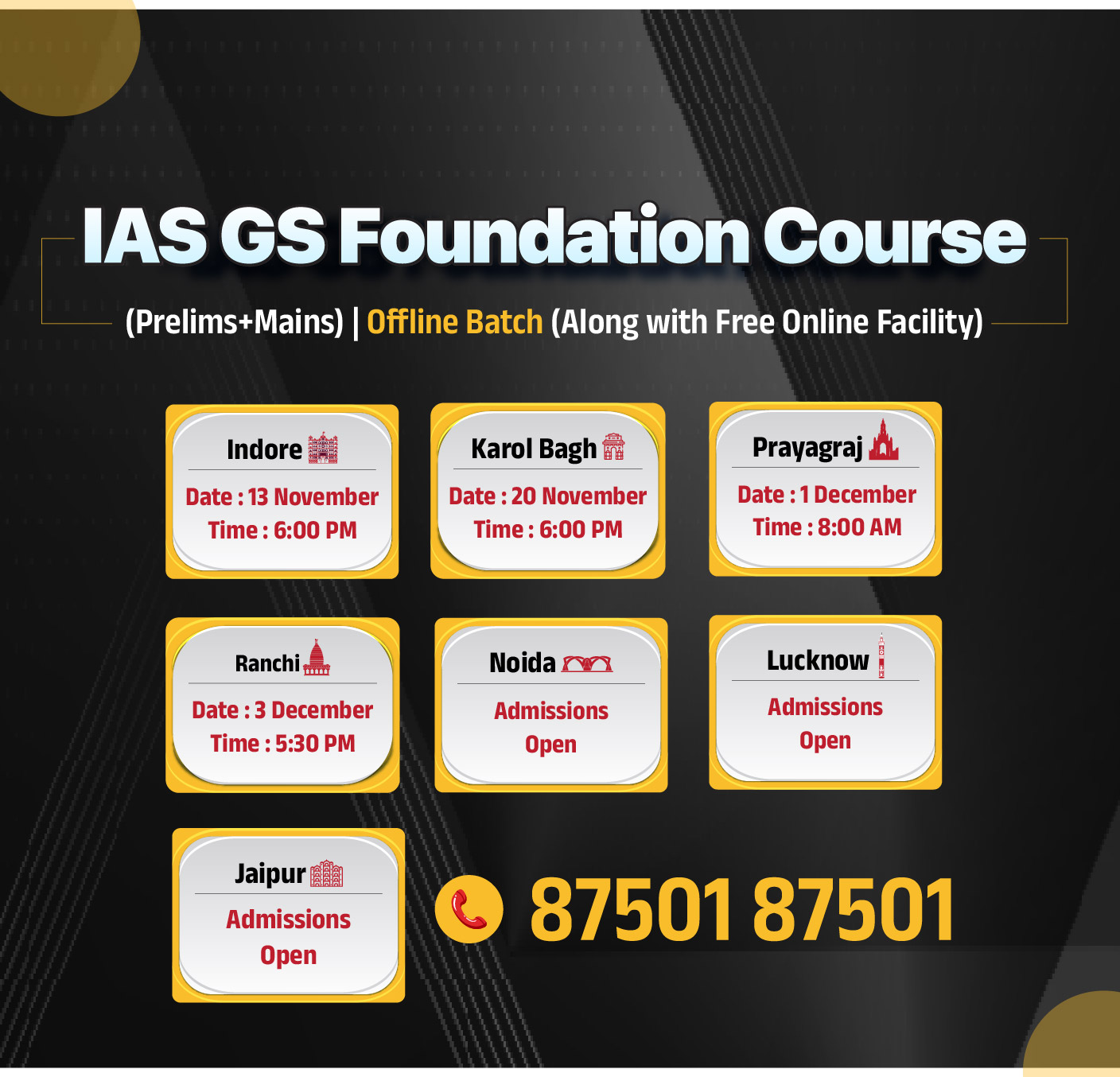
Governance
DCGI Directives on Global Standard GMP
For Prelims: Drugs Controller General of India, World Health Organization, Central Drugs Standard Control Organisation, National Pharmaceutical Pricing Authority
For Mains: Drug regulation reforms under the Drugs and Cosmetics Act, Public health and pharmaceutical safety, India’s role as Pharmacy of the World
Why in News?
The Drugs Controller General of India (DCGI) has instructed state drug regulators to enforce revised Good Manufacturing Practices (GMP) under Schedule M of the Drugs and cosmetic act 1940 and rules 1945, by January 2026, aligning India’s pharmaceutical manufacturing norms with global standards.
- The move comes amid heightened scrutiny following incidents of contaminated cough syrups that caused several child deaths in India and abroad.
What is the Schedule M of the Drugs and Cosmetic Act 1940?
- About: The Schedule M under the Drugs and Cosmetics Act, 1940 (and the corresponding Drugs and Cosmetics Rules, 1945) serves as the statutory framework that ensures all medicines produced in the country are safe, effective, and of consistent quality, both for domestic use and export.
- In 2023, the Centre revised Schedule M requirements wherein “GMP” was upgraded to “good manufacturing practices and requirements of plan and equipment for pharmaceutical products” to align India’s drug manufacturing standards with World Health Organization (WHO) -GMP norms.
- Key Provisions of Schedule M:
What is the Current State of India's Pharmaceutical Sector?
- India as Pharmacy of the World: India is the world’s 3rd largest producer of medicines by volume and 14th by value.
- It is also the largest supplier of generic drugs, accounting for about 20% of global exports, and a major source of affordable vaccines worldwide, reinforcing its status as the “Pharmacy of the World.”
- India’s pharma sector supplies 55-60% of UNICEF’s vaccines, meeting 99% of WHO’s DPT (Diphtheria, Whooping cough and Tetanus) vaccine demand, 52% for BCG (Bacillus Calmette-Guérin is a vaccine primarily used against tuberculosis (TB)), and 45% for measles.
- From Africa to America, Indian vaccines save millions.
- India’s Biotechnology Sector: India’s biotech industry expanded from USD 10 billion (2014) to over USD 130 billion in 2024 ( a 13-fold increase). It is projected to reach USD 300 billion by 2030.
- Economic Potential: Drug and pharma exports rose from USD 15.07 billion (2013–14) to USD 27.85 billion in 2023–24. The US, Belgium, South Africa, the UK, and Brazil are the top five export destinations.
- The Indian pharmaceutical industry is projected to grow at a CAGR of over 10% to reach a size of USD 130 billion by 2030.
- India has become a global hub for medical tourism, offering affordable, high-quality treatment enabled by major reforms in the healthcare sector.
What are the Challenges Faced by India’s Pharmaceutical Industry?
- Quality Control and Compliance Issues; India has witnessed several incidents of substandard and contaminated drugs, including cough syrup tragedies in India and abroad.
- Many small and medium manufacturers struggle to fully comply with GMP.
- Several countries have flagged contamination and safety issues, and repeated quality lapses along with WHO warnings have hurt India’s credibility as a dependable drug producer.
- Compliance with global certifications such as the US Food and Drug Administration's (FDA) has become more expensive, putting financial strain on small exporters.
- Regulatory Weaknesses: The Indian regulatory system remains fragmented, divided between the Central Drugs Standard Control Organisation (CDSCO) and state-level drug authorities.
- This overlap leads to inconsistent enforcement and delays in approvals.
- Despite the introduction of revised Schedule M (2023) to align with global norms, the pace of implementation has been slow, creating uneven standards across regions.
- Dependence on Imported Raw Materials: India imports nearly 70% of its Active Pharmaceutical Ingredients (APIs), mainly from China, which poses major risks to supply chain security and price stability.
- The Covid-19 pandemic exposed this overdependence, disrupting domestic production.
- Although the government launched the PLI Scheme for Bulk Drugs to promote local manufacturing, progress remains limited.
- Price Controls and Low Profit Margins: Strict price caps imposed by the National Pharmaceutical Pricing Authority (NPPA) keep essential medicines affordable but reduce profit margins for companies.
- This leaves little room for investment in R&D or technological upgrades. As a result, firms often prioritise cost efficiency over innovation and quality improvements.
- Weak R&D: Most Indian pharmaceutical companies focus on generic production rather than developing new drugs or molecules.
- Limited collaboration between academia, industry, and government further restricts innovation and slows the creation of high-value, patented drugs.
- Emerging and Technological Challenges: The industry also faces new issues such as antimicrobial resistance (AMR), which is linked to excessive antibiotic use.
- The rise of biopharmaceuticals, AI-driven drug discovery, and green manufacturing requires rapid technological adaptation.
- Companies must upgrade facilities and expertise to remain globally competitive and environmentally sustainable.
What Measures can Strengthen India’s Pharmaceutical Sector?
- Strengthen GMP Compliance: Upgrade infrastructure of MSME pharma units through subsidised loans and technology grants.
- Mandatory third-party audits and surprise inspections to ensure strict Schedule M and WHO-GMP compliance.
- Modernise Drug Regulation: Establish a single, centralised national drug authority to streamline approvals and avoid CDSCO–state overlaps.
- Introduce uniform digital platforms for licensing, batch tracking, and adverse drug reaction reporting.
- Reduce Dependency on Imported APIs: Fast-track the Bulk Drug Parks and PLI schemes to revive domestic API and intermediate manufacturing. Provide long-term purchase guarantees or viability-gap funding for critical APIs.
- Boost R&D, Innovation & Drug Discovery: Increase public investment in pharma R&D to at least 2% of GDP, with grants for start-ups and academia.
- Strengthen National Institutes of Pharmaceutical Education and Research, biotech parks, and Centres of Excellence under the PRIP Scheme.
- Improve Export Competitiveness: Support small exporters in meeting USFDA, and EU-GMP standards through training and financial subsidies.
- Negotiate regulatory harmonisation agreements with Africa, Latin America, and ASEAN markets.
- Strengthen Waste Management Standards: India should tighten pharma effluent norms to curb AMR, promote green manufacturing and solvent recovery, and develop zero-liquid-discharge clusters for cleaner, sustainable production.
Conclusion
India’s pharmaceutical industry stands at a crossroads, admired globally for affordable generics but under scrutiny for quality, safety, and innovation gaps. To maintain its status as the “Pharmacy of the World,” India must strengthen regulatory enforcement, reduce API dependence, invest in research and digital innovation, and support small manufacturers in meeting international standards.
|
Drishti Mains Question: “Revised Schedule M marks a major step towards global-standard manufacturing, but India’s pharma sector needs deeper structural reform.” Discuss. |
Frequently Asked Questions (FAQs)
1. What is Schedule M under the Drugs and Cosmetics Act?
It sets Good Manufacturing Practices (GMP) and infrastructure standards for pharmaceutical units under the Drugs and Cosmetics Act; revised in 2023 to align with WHO-GMP norms.
2. What is India’s global status in pharmaceuticals?
India is the 3rd-largest producer by volume, supplies ~20% of global generics, and provides 55–60% of UNICEF vaccines.
3. Who is the Drugs Controller General of India (DCGI)?
The DCGI heads the Central Drugs Standard Control Organisation (CDSCO), which is responsible for ensuring quality drugs supply across the country.
UPSC Civil Services Examination, Previous Year Question (PYQ)
Prelims
Q. Which of the following are the reasons for the occurrence of multi-drug resistance in microbial pathogens in India? (2019)
- Genetic predisposition of some people
- Taking incorrect doses of antibiotics to cure diseases
- Using antibiotics in livestock farming
- Multiple chronic diseases in some people
Select the correct answer using the code given below.
(a) 1 and 2
(b) 2 and 3 only
(c) 1, 3 and 4
(d) 2, 3 and 4
Ans: (b)
Mains
Q. How is the Government of India protecting traditional knowledge of medicine from patenting by pharmaceutical companies? (2019)

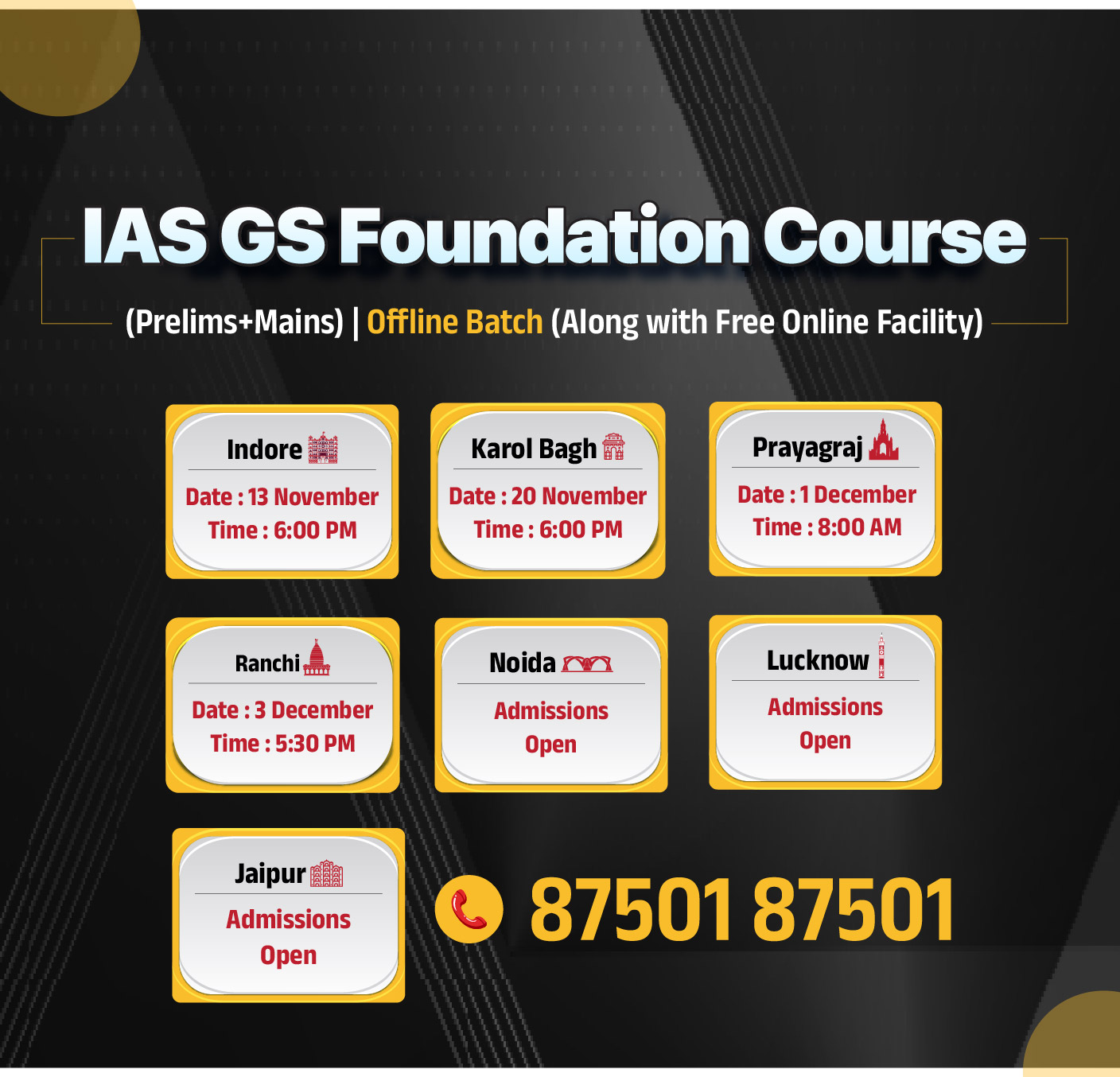
Facts for UPSC Mains
Intergenerational Equity & Conservation of Endangered Species
Why in News?
The Supreme Court (SC) of India reviewed the conservation status of the Great Indian Bustard (GIB) and the Lesser Florican, questioned the relevance of Western principles like intergenerational equity for protecting species close to extinction, and stressed the need for an eco-centric approach to biodiversity governance.
What is the Principle of Intergenerational Equity?
- About: It is the idea that each generation has both the right to use and enjoy natural resources and the responsibility to conserve them for future generations.
- It treats the environment as a shared inheritance, not something one generation can exhaust at the cost of the next.
- Recognition in International Law: This principle is embedded in several major international agreements, including the United Nations Framework Convention on Climate Change (UNFCCC), and the Convention on Biological Diversity, the World Heritage Convention.
- It also appears in foundational global declarations like the Stockholm Declaration(1972) and the Rio Declaration(1992), highlighting its long-standing acceptance in environmental governance.
- Role in Biodiversity and Sustainability: The Kunming-Montreal Global Biodiversity Framework reinforces this principle by encouraging active involvement of younger generations in environmental decisions.
SC's Observation on the Principle of Intergenerational Equity
- Anthropocentric Nature of the Principle: The Court noted that intergenerational equity is human-centred, focusing on conserving resources mainly for the benefit of future human generations.
- SC noted that, it treats nature as a resource to pass down, ignoring the intrinsic value of species and ecosystems beyond human use.
- Limited Protection for Endangered Species: The Court observed that the principle offers weak conservation support when a species is already close to extinction.
- This limits its usefulness in biodiversity law, especially for critically endangered species like the GIB and Lesser Florican.
What are the Key Facts About Great Indian Bustards and Lesser Floricans?
Great Indian Bustard
- About: The Great Indian Bustard is a critically endangered grassland bird. It is one of the four bustard species in India, along with the Lesser Florican, Bengal Florican and Macqueen’s Bustard.
- The GIB is omnivorous and highly vulnerable to power line collisions due to its poor frontal vision.
- Distribution and Habitat: Found in India and the eastern regions of Pakistan. It lives in arid and semi-arid grasslands, open landscapes with thorny scrub and tall grasses mixed with cultivation.
- In India it is present mainly in Rajasthan, with smaller populations in Karnataka, Maharashtra, and Madhya Pradesh
- Breeding and Behaviour: Males remain solitary during the breeding season but may form flocks in the non-breeding period.
- Ecological Importance: GIB acts as an indicator species, it reflects the health of grassland ecosystems. Their decline signals degradation of native grasslands.
- Protection Status: IUCN Red List (Critically Endangered).
- CITES (Appendix 1)
- Convention on Migratory Species (CMS) (Appendix I).
- Wildlife (Protection) Act, 1972 (Schedule I).
- There are around 70 Bustards in captivity and 150 in the wild.
- Threats: The species faces severe threats from habitat loss, power line collisions, hunting, and predation by free-ranging dogs.
Lesser Florican
- About: The Lesser Florican is the smallest bird in the bustard family. It has a small body with longish bill and legs.
- Distribution and Habitat: Breeds in Gujarat, Rajasthan, Maharashtra, and Madhya Pradesh.
- They are found in productive lowland grasslands (below 250 m), dry grasslands with scattered scrub, and sometimes in cotton and millet fields.
- It is a rare summer visitor to the Terai region of Nepal.
- Conservation Status: IUCN Red Lis (Critically Endangered)
- Wildlife Protection Act,1972 (Schedule I)
- CITES (Appendix II)
What are SC’s Recommendations for Biodiversity Conservation?
- Shift Toward an Eco-Centric Approach: In T.N. Godavarman Thirumulpad vs Union of India (2012), the SC affirmed an eco-centric approach, stating that the Constitution requires compassion for all living beings and that species have intrinsic value beyond human use.
- The Court urged a shift away from anthropocentric thinking toward an eco-centric philosophy.
- Stronger Protection for Critically Endangered Species: Calls for focused, science-based conservation action for species like the Great Indian Bustard and the Lesser Florican.
- Fair treatment extends to animals : In Animal Welfare Board of India v. Nagaraja (2014), the SC held that Article 21’s guarantee of dignity and fair treatment extends to animals, reinforcing the constitutional duty to protect their well-being.
- The Court urged that environmental and wildlife laws be consistently interpreted to support long-term ecological balance and sustainable conservation.
Conclusion
The Supreme Court stressed that conservation of the dying species needs an eco-centric approach rather than human-centred principles. The Court reaffirmed that safeguarding endangered species is a constitutional and ecological responsibility.
|
Drishti Mains Question: Examine the limitations of intergenerational equity principle for conserving critically endangered species in India. Suggest alternatives with legal and policy measures. |
Frequently Asked Questions (FAQs)
1. What is intergenerational equity?
Intergenerational equity holds that each generation may use natural resources but must conserve them for future generations.
2. Why did the Supreme Court find intergenerational equity inadequate for endangered species?
The Court said the doctrine is essentially anthropocentric (focusing on human benefit across generations) and offers limited protection when species require immediate, species-specific, eco-centric interventions.
3. What practical measures did the Supreme Court recommend for bustard and florican conservation?
The Court urged an eco-centric policy focus: stronger habitat protection, science-based recovery programmes (including captive breeding), infrastructure mitigation (undergrounding/rerouting power lines), and timely implementation of conservation directives.
UPSC Civil Services Examination, Previous Year Questions (PYQs)
Prelims
Q. Which one of the following groups of animals belongs to the category of endangered species? (2012)
(a) Great Indian Bustard, Musk Deer, Red Panda and Asiatic Wild Ass
(b) Kashmir Stag, Cheetal, Blue Bull and Great Indian Bustard
(c) Snow Leopard, Swamp Deer, Rhesus Monkey and Saras (Crane)
(d) Lion-tailed Macaque, Blue Bull, Hanuman Langur and Cheetal
Ans: (a)
Q. With reference to India’s Desert National Park, which of the following statements are correct? (2020)
- It is spread over two districts.
- There is no human habitation inside the Park.
- It is one of the natural habitats of Great Indian Bustard.
Select the correct answer using the code given below:
(a) 1 and 2 only
(b) 2 and 3 only
(c) 1 and 3 only
(d) 1, 2 and 3
Ans: (c)
Mains
Q. How does biodiversity vary in India? How is the Biological Diversity Act,2002 helpful in the conservation of flora and fauna? (2018)

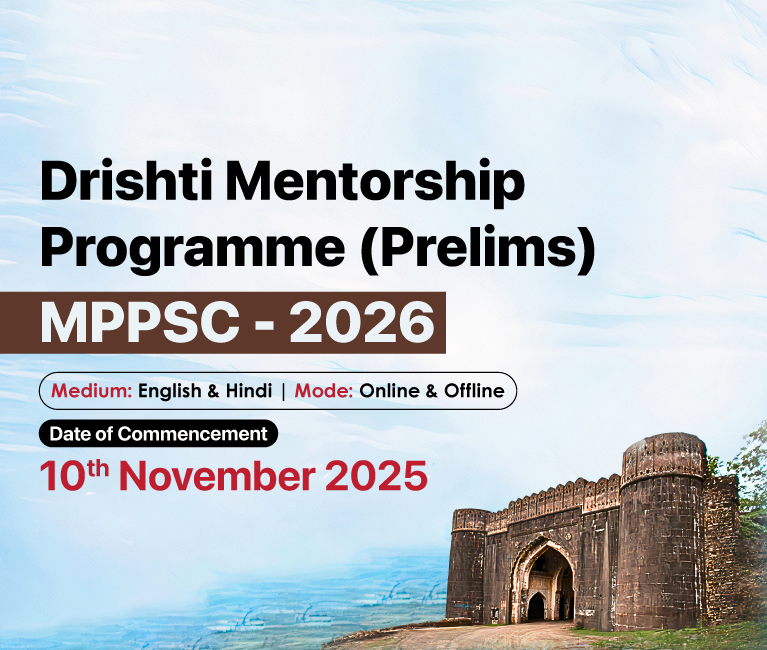
Important Facts For Prelims
Cheetah Translocation- From Botswana to Bharat
During the 1st-ever Presidential visit from India to Botswana, the President of India announced the translocation of 8 cheetahs to India, marking a major milestone in Project Cheetah.
- Botswana symbolically handed over the cheetahs, with 5 quarantined at the Mokolodi Nature Reserve (Botswana).
What is Project Cheetah?
- About: Launched in 2022 under Project Tiger, Project Cheetah aims to reintroduce cheetahs extinct in India since 1952, as the world’s 1st intercontinental wild carnivore translocation.
- Objective: It aims to restore cheetah populations, revive savanna ecosystems, promote ecotourism and livelihoods, and reduce human-wildlife conflict through community awareness.
- Governance Structure: The National Tiger Conservation Authority (NTCA) implements Project Cheetah alongwith Madhya Pradesh Forest Department and the Wildlife Institute of India (WII), and in 2023 formed a Steering Committee to oversee and guide its implementation.
- Status of Cheetah Population and Habitat: Currently, India has 27 cheetahs, including 16 that were born in the country.
- Kuno National Park, Gandhi Sagar wildlife sanctuary (WLS) along with Nauradehi WLS (proposed), serves as the habitat for translocated cheetahs.
- The project is supported by over 350 ‘Cheetah Mitras’ working to raise local awareness and reduce human-wildlife conflict.
What are Key Facts Regarding Botswana?
- Geography & Landscape: Landlocked country in Southern Africa, bordered by South Africa (south & east), Namibia (west), and Zimbabwe (east).
- Kalahari Desert covers over 70% of Botswana’s landmass; though called a desert, it receives moderate rainfall and supports vegetation
- Landscape: Dominated by savanna grasslands; baobab trees (some over 2,000 years old) are common.
- Major Natural Attractions:
- Okavango Delta: One of the world’s largest inland deltas and a UNESCO World Heritage Site.
- Chobe National Park: Famous for having over 50,000 elephants.
- Conservation Efforts: Around 17% of land is reserved for national parks and game preserves.
- Economy: Botswana is one of the world's biggest producers of diamonds, accounting for about 20% of global production.
Frequently Asked Questions (FAQs)
1. What is Project Cheetah?
Project Cheetah (launched 2022 under Project Tiger) is the world’s first intercontinental large-carnivore translocation project aiming to reintroduce cheetahs extinct in India and establish sustainable breeding populations in historical habitats.
2. What are the key conservation achievements to date?
India has translocated 20 cheetahs from Africa (8 Namibia, 12 South Africa), now totalling 27 in India with 16 cubs born locally, marking successful reintroduction milestones.
3. Name the African countries from which cheetahs were translocated to India under Project Cheetah.
The first cheetahs were translocated from Namibia (2022), followed by South Africa (2023), and recently from Botswana (2024).
UPSC Civil Services Examination Previous Year Question (PYQ)
Q. Consider the following: (2012)
- Black-necked crane
- Cheetah
- Flying squirrel
- Snow leopard
Which of the above are naturally found in India?
(a) 1, 2 and 3 only
(b) 1, 3 and 4 only
(c) 2 and 4 only
(d) 1, 2, 3 and 4
Ans: (b)

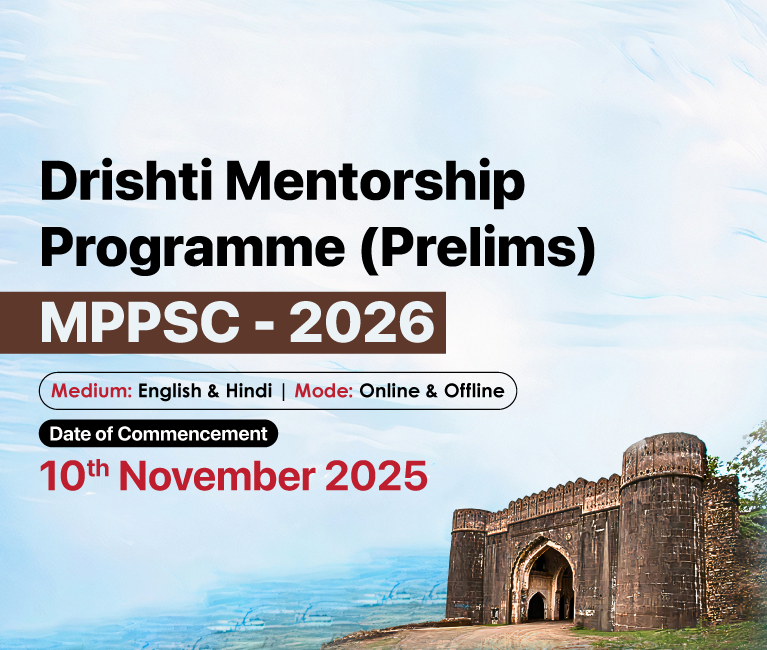
Rapid Fire
Nyoma Airbase
India has inaugurated its newest and highest fighter-capable airbase at Nyoma in Ladakh, built by the Border Roads Organisation (BRO), marking a major boost to the country’s air power along the northern front.
- Nyoma Airbase: Nyoma lies at 13,700 feet, making it one of the world’s highest fighter-capable airbases.
- Located only 35 km from the Line of Actual Control (LAC), it gives India rapid-response capability against China.
- It strengthens India’s forward military posture after the Chinese People's Liberation Army (PLA) troop buildup in eastern Ladakh (2020).
- The base will significantly boost air infrastructure in Ladakh and enhance the Indian Air Force's (IAF) ability to respond quickly to any aerial threats along the northern frontier.
- Key Capabilities of the Nyoma Base: It supports fighter jet operations, unlike the earlier limited-use airstrip. Enhances surveillance, mobility, and logistics in a strategically sensitive region.
| Read more: Bagram Air Base |

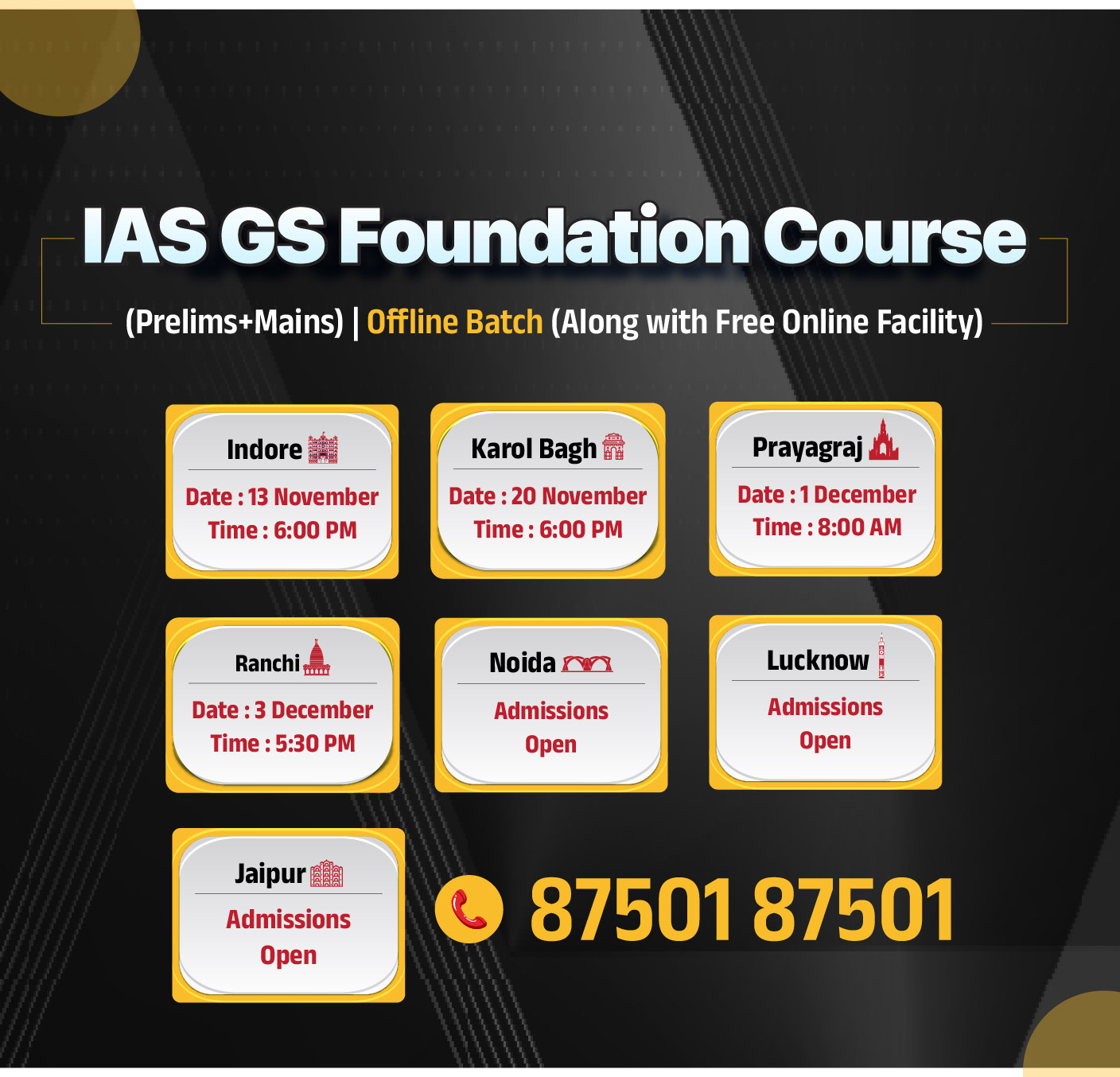
Rapid Fire
Singapore Introduces World’s First Green Fuel Levy
Singapore has become the first country in the world to introduce a Green Fuel Levy on air passengers departing from the country, starting next year.
- The revenue generated will be used for the centralised purchase of Sustainable Aviation Fuel (SAF) to help the aviation industry cut emissions.
- The aviation sector produces 1.2% of global greenhouse gas emissions, yet SAF, despite being a promise, remains costly and scarce, forming only 0.3% of global jet fuel in 2024.
Sustainable Aviation Fuel (SAF)
- About: SAF is an alternative to conventional jet fuel, produced from non-petroleum feedstocks like agricultural waste, municipal solid waste, forestry residues, and waste oils.
- It can be blended (10–50%) with Aviation Turbine Fuel (ATF) without modifications to aircraft engines or existing airport infrastructure.
- Significance of SAF:
- Emission Reduction: SAF can lower greenhouse gas emissions by up to 80%, depending on the feedstock and technology used.
- Compatibility: Fully compatible with existing aircraft engines and refuelling infrastructure.
- Renewable and Flexible: Can be derived from various renewable feedstocks, enabling fuel diversification.
- Global Impact: SAF could contribute up to 65% of emission reductions required for global aviation to reach net-zero CO₂ by 2050, in line with the Paris Agreement.
India’s SAF Roadmap
- The National Biofuel Coordination Committee has set SAF blending targets for international flights as 1% by 2027, 2% by 2028, and 5% by 2030.
- India’s first commercial passenger flight using indigenously produced SAF-blended ATF was successfully operated by AirAsia (Pune–Delhi route) in May 2023.
- It will help India achieve Net Zero target by 2070.
| Read More: Sustainable Aviation Fuel |

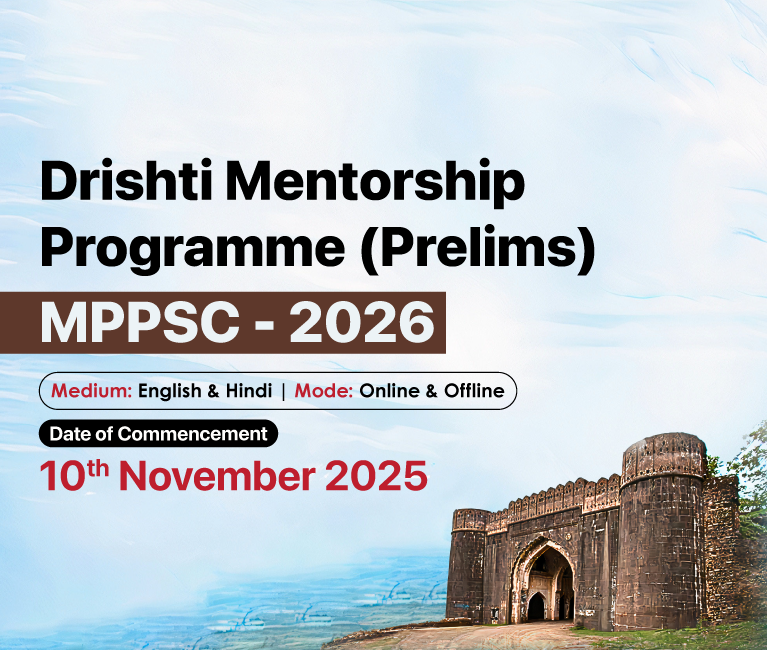
Rapid Fire
Sahitya Akademi – Bal Sahitya Puraskar 2025
The Bal Sahitya Puraskar 2025 by the Sahitya Akademi will be held on 14th November 2025 to promote and celebrate quality children’s literature across India’s diverse languages and cultures.
- To honour Excellence: Bal Sahitya Puraskar is a literary award instituted in 2010 to honour excellence in children’s literature across 24 Indian languages.
- Eligibility: The author must be Indian, and the book should be an original work for readers aged 9–16, published within the last five years before the award year.
Sahitya Akademi
- About: It is an autonomous body, formally inaugurated in 1954 and registered in 1956 under the Societies Registration Act, 1860, to promote Indian literature.
- Awards & Honours: It gives 24 Literary Awards and 24 Translation Awards each year, along with the Bhasha Samman for contributions to unrecognised and classical/medieval languages.
- Sahitya Akademi Awards: Started in 1954, these are annual awards for outstanding literary works in 22 scheduled languages, English, and Rajasthani. It is India’s 2nd-highest literary honour after the Jnanpith Award.
| Read More: Sahitya Akademi Award 2024 |

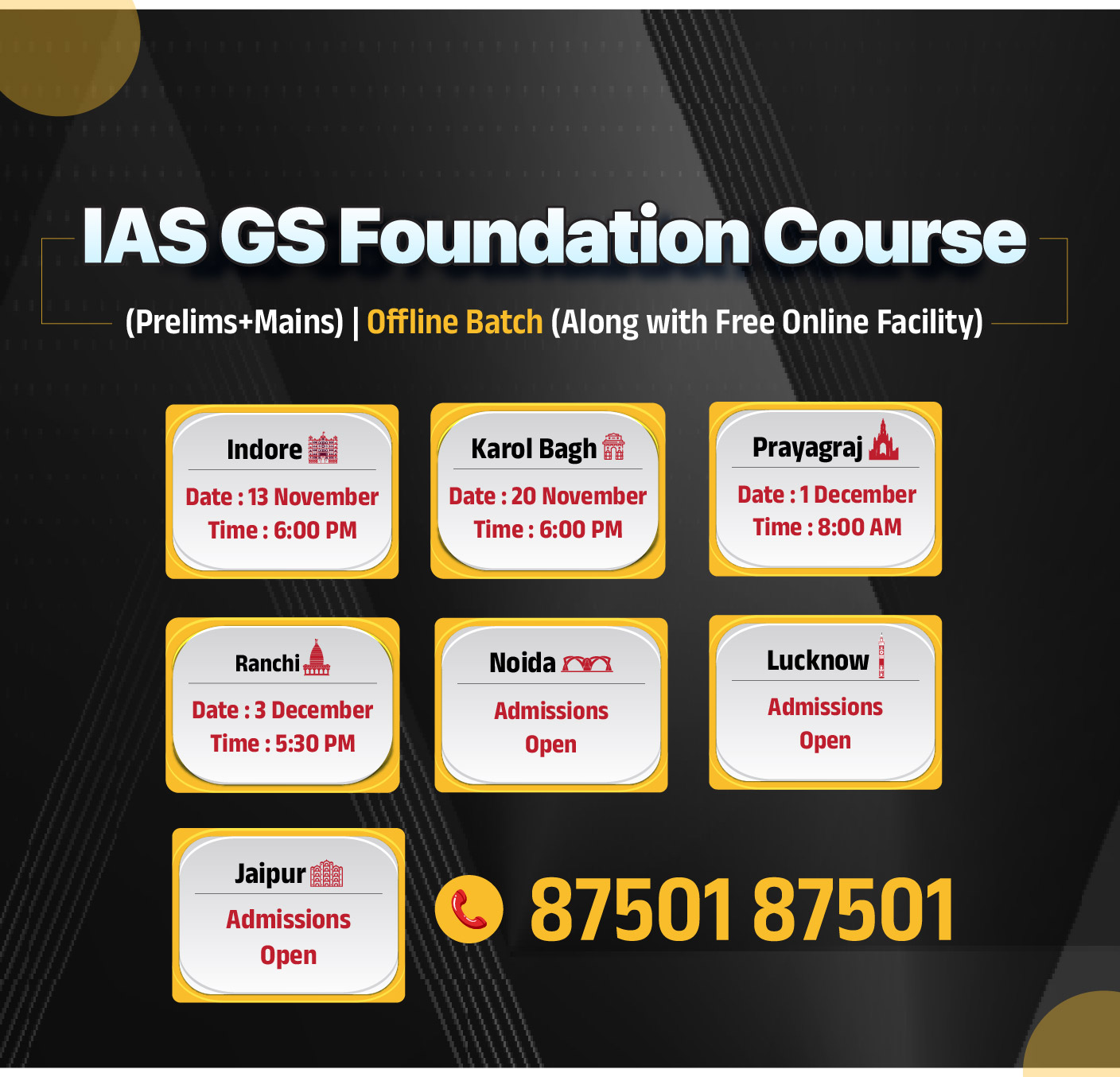
Rapid Fire
Petroleum and Natural Gas Regulatory Board (PNGRB)
The Gas Authority of India Limited (GAIL) chairman has expressed dissent over several key recommendations of the Petroleum and Natural Gas Regulatory Board (PNGRB) expert committee headed by DK Sarraf on boosting domestic gas usage.
PNGRB
- About: PNGRB is a regulatory and statutory body constituted under the Petroleum and Natural Gas Regulatory Board Act, 2006.
- The Board functions like a tribunal with powers similar to a Civil Court and performs quasi-judicial duties.
- Objective: It aims to protect consumer interests, regulate petroleum and natural gas activities (excluding crude oil production), promote competitive markets, and ensure uninterrupted supply across India.
- Dispute Resolution: It can adjudicate disputes among entities or individuals over petroleum and gas operations, including refining, storage, transportation, distribution, and marketing.
- It also handles complaints on retail obligations, price displays, pipeline terms, city gas networks, and can issue orders, directions, or refer matters for investigation.
- Appeal Mechanism: The Appellate Tribunal, established under Section 110 of the Electricity Act, 2003, serves as the appeal authority under the PNGRB Act, 2006.
| Read More: Strengthening Regulatory Bodies |



